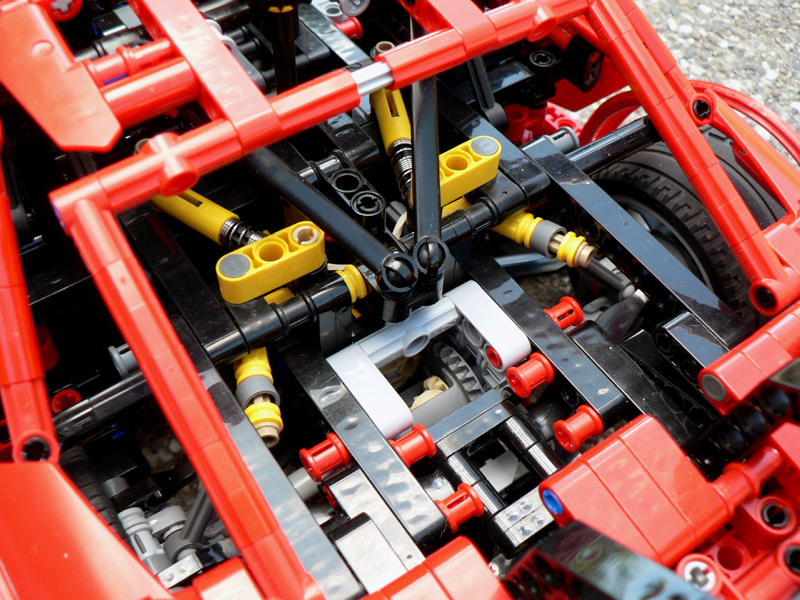Jump to video!
This was my first modular model and this modularity helped to refine the design to achieve a sturdy and playable model. The parts of the body could be removed easily and the chassis was designed to be very similar in function and proportions to the real one. Scale: 1:10.
Features:
- Independent, push rod suspension
- 4-speed manual gearbox
- V8 fake engine
- Rear wheel drive
- Hand of God and cockpit steering
- Opening, locking doors
- Chassis with monocoque and roll-cage
Design process and challenges
This was my first modular build which simplified and complicated the design process at the same time. Complicated because the modules must have proper interfaces, simplified because the modules could be fixed or redesigned separately (at that time my inventory was not sufficient to maintain two models built in parallel).The steering is always a hard part in a car model because it's the most basic playability feature and a badly designed steering system (too much slack, too much force or too much turns) can make the model unpleasant to play with. Plus a steering wheel that's impossible to center perfectly can be very off in a car that doesn't have round steering wheel. The first version had rather complicated routing of steering drivetrain which utilized two universal joints. The slack caused mainly by the U-joints was unacceptably big and the model was a pain to play with.
The gearbox and the cockpit part had to be redesigned so that the steering could be simplified. Luckily, such race cars don't have passengers' seats so the gearbox could be placed off from the center line leaving space for the steering axle to go straight all the way through the model. Note that in the real car the gearbox is between the cockpit and the rear axle, but a LEGO gearbox was too big to be placed there.
The suspension was a big challenge and due to the limited space the front was simplified in a way that the shock absorbers were connected directly to the upper suspension arms instead of through an additional rod. The rear suspension was implemented authentically, though the shock absorbers are a bit big for the scale.
Designing the body of an existing car is very hard due to the constrains and the body style of this LEGO model was not really my style. There were no big challenges probably because I gave up on my preferred style quite early.
With that said, I was very satisfied with the model that time but since then I see that something is a bit off with the overall proportions (the roof seems to be too high).
Probably this is still my most popular model and has the biggest media coverage: it was featured by The Lego Car Blog, it was discovered by the Audi Sport Facebook Team and I was offered two VIP tickets to a DTM race. I submitted the model to Ideas and it was blogged by Digitaltrends and by Fortitude. The project got Staff picked too.
Thorsten Spelz made instructions for this model.
External links:

















